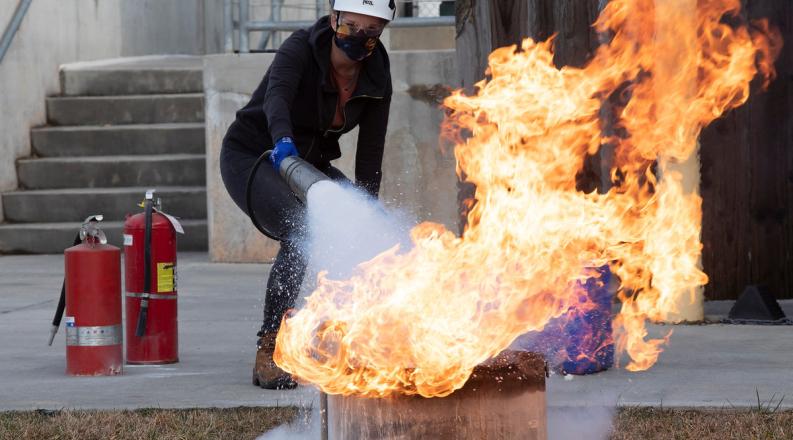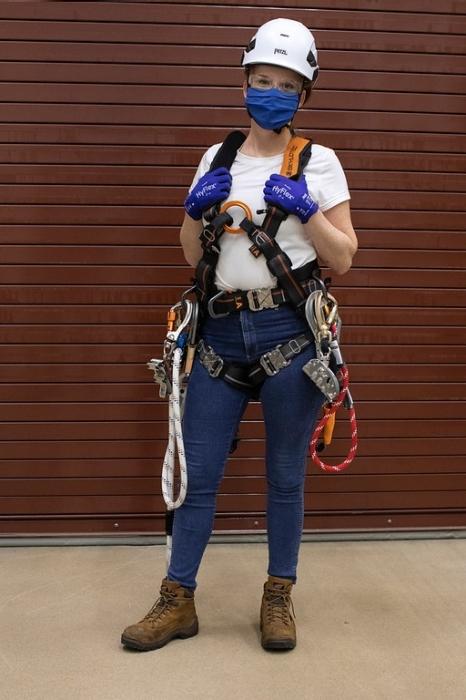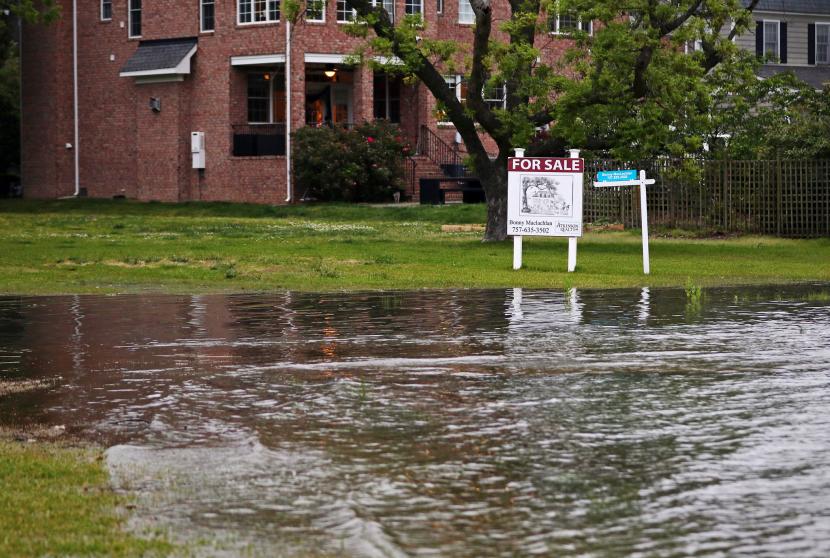By Sherry DiBari
While most students were completing assignments at home in front of a computer, Rema McManus was climbing a tower, rescuing a 150-pound "body" and putting out fires.
McManus is the first Virginia graduate of the Global Wind Organization-certified basic safety training courses for wind turbine technicians.
McManus earned four of the five required certifications that allow her to go "up tower" on any land-based turbine, but not yet offshore, which requires one additional certification - Sea Survival.
McManus, an offshore wind program specialist with Old Dominion University's Center for Coastal Physical Oceanography (CCPO), earned the certificates during an intensive week-long course at the New College Institute in Martinsville, Virginia.
"I wanted to see first-hand what offshore wind technicians are doing and wanted to know what they go through," she said.
McManus works with George Hagerman, senior project scientist, and Paul Olsen, executive director of programs and partnerships, to bring together all things offshore wind industry.
Those efforts include outreach, legislation, supply chains, workforce development, offshore wind initiatives and facilitating a taskforce of more than 300 people.
In October, the Mid-Atlantic Wind Training Alliance announced a wind workforce training partnership with Centura College, Mid-Atlantic Maritime Academy and the New College Institute, which served as the host institution.
"The program is Virginia's first offshore and onshore wind workforce training collaborative," a press release from Gov. Ralph Northam noted. "The program will offer industry-required certifications that are critical to the operations and long-term maintenance of wind projects."
"For Virginia, this certificate program provides specialized training needed by veterans, tradesmen and women, and high school graduates who want to participate in this emerging offshore wind energy industry on the eastern seaboard," McManus said.
In January, the Alliance offered its first two training courses: basic safety and basic technical training. Both are certified by the Global Wind Organization and the National Center for Construction, Education, and Research.
McManus was the only student in the basic safety training course, which covered everything from working in heights, fire awareness, CPR, harness use and manual handling to first aid.
Three other students in an adjoining classroom opted for the basic technical training course, which provided an overview of the electrical, mechanical and hydraulics components of wind turbines.
McManus explained that the basic training course covers "how to actually service the turbine, the gearbox, all of the components inside the turbine and how to work with them, while the basic safety course is how to safely go up a tower and access your technical workspace and be prepared for any emergency that might arise there."
In order to service an offshore wind turbine, you would need at least both of the courses, plus the Sea Survival module.
The safety course was "more hands on and more rigorous in the sense of climbing the tower and rescuing a 150-pound 'body' from a platform and how to do it safely as if they were my partner," McManus said.
The hands-on part appealed to McManus, who works part time as a car mechanic with D & J Auto several weekends a month. "I enjoy understanding the inner workings of complex systems." she said.
McManus noted the course spent a lot of time on first aid, particularly because wind turbine technicians usually work in pairs. "You are kind of responsible for each other," she said.
"The EMT's not coming, the fire department's not coming, the police aren't coming. No one's coming to help you with this. It's just you," McManus said. "And if you are several hundred feet in the air, what are you going to do?"
Training included climbing and descending a 25-foot wind training tower, navigating a simulated fire and smoke scenario, and emergency escape from the top of the turbine.
McManus' biggest surprise was learning about the potential for dangerous wildlife in the offshore turbines. She knew about aquatic animal concerns, but never thought about spiders or snakes which could hitchhike from turbines stored on the ground before installation offshore.
It's not something you want to discover while you are strapped in a harness dangling over the ocean.
"Being a part of something bigger than myself, and something that is so needed and critical at this time, is pretty exciting," McManus said.
"Rema was amazing last week during the Global Wind Institute training, said Brian R. Pace, coordinator of advanced manufacturing at the New College Institute. "She did an incredible job and deserves the recognition."







